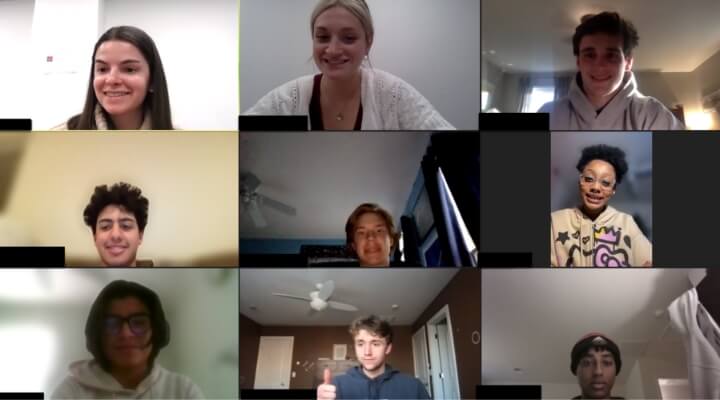Do you ever wish you could get inside someone’s head and know exactly what they’re thinking? (Especially high school students on the brink of a college decision?) Us too. Lucky for you, we did it so you don’t have to.
Over the past year, our team conducted a research study with a large group of current high school students in order to understand their thought processes, digital behaviors, what they like and dislike when it comes to the college search and admissions process, and how they’re feeling about this life-changing decision on the horizon.
Here’s a snapshot of what we learned:
How are high schoolers using technology?
- We already knew that high schoolers are constantly on their phones and that’s where they’re consuming everything from TikToks to college admissions emails. But, we learned that the majority of high school students are using the Gmail app and ‘Dark Mode’ on their mobile devices.
- So what? It’s crucial to test your communications in a way that mimics the intended user experience. Not all formats or templates are created equal—make sure you’re taking these elements into consideration before you hit send.
Where do high schoolers get hung up in the admissions process?
- Did you know that some high school seniors don’t know what an enrollment deposit is? Let alone understand the concept of the FAFSA.
- So what? Break things down and be a resource. Never ask for something without explaining its purpose. Higher ed lingo is confusing enough to the average professional, let alone a 16-year-old navigating the admissions process.
Which print pieces do high schoolers actually engage with?
- It’s no secret that high schoolers receive a ton of college mail. We asked our focus group participants, ‘Which print pieces do you actually read?’ They all said the same thing: The ones that are different. Our students shared examples from their own mailboxes, and they all had unique approaches that made them stand out from the rest. Most of them included elements that were interactive or visually interesting.
- So what? Don’t be afraid to be different or try something out-of-the-box. High school students are constantly evolving and your marketing should be too.
How do students really feel about the college admissions process?
Data and analytics can show us where these students are and what they’re engaging with. But no tool can tell us how these students are feeling. So, we asked them. Here’s what they had to say:
- “The whole process is really ambiguous.”
- “Financial aid can be really hard.”
- “I don’t know how college applications work.”
- “The FAFSA is so long and confusing. I had no idea it was so extensive.”
- “It’s easy to get left behind.”
SO WHAT? Never lose sight of the human on the other end of the screen, phone, application, or deposit. Our research shows that students value empathy above all. Be sure to keep in mind the weight of this decision and the complexity of the admissions process every time you interact with a prospective student.
If it feels like high schoolers are the ones calling the shots at your institution, it’s because they are. That’s why we think it’s important to hear what they have to say. In fact, we even asked them what advice do high schoolers have for enrollment marketers?
- Know who you are. People know which schools fit into which categories. Different kids want different things and you should play to your strengths and embrace who you are.
- Do your research. College emails can be so general, you should know what your target audience is actually interested in and serve them relevant information. Go beyond first-name personalization in your emails and include programs of interest or extracurricular activities.
- Pick your tour guides wisely. Touring a school is the most impactful part of the college admissions process. If you’re not already, consider collecting student interests through the tour registration process. It doesn’t have to be on the initial visit registration form; it can be through subsequent email confirmations. This way you’ll have the opportunity to connect relatable and enthusiastic tour guides with your visitors. High school students just want to meet someone they could see themselves being friends with.
If you take anything from this blog post, let it be this: Don’t be complacent. Challenging as it is, taking a step back and evaluating the effectiveness of your processes and marketing can go a long way with high school students. Who knows, it may even seal the deal and earn you an enrollment deposit.
